Context
The COVID-19 pandemic has had wide-ranging repercussions on the lives and livelihoods of people around the world. According to the APEC Policy Support Unit (PSU), the APEC regional economy contracted by 3.7 per cent in the first half of 2020, upending the region’s economic progress and creating widespread uncertainties. The pandemic has exposed existing challenges of environmental degradation and growing inequality, while accelerating the process of digitalization. Moving forward, as vaccine rollouts provide a glimpse into a post-pandemic world, APEC aims to play a key role in the rebuilding process by leading a coordinated and cooperative response to regional and global crises. To address the specific challenges being faced by MSMEs during the pandemic, governments around the world have responded by creating fiscal and monetary policies to provide resources and support.
The following section examines the overall context of the pandemic in the Asia Pacific region, with this toolkit drawing from the experiences of four case studies: Indonesia, Peru, the Philippines, Vietnam.
Vietnam
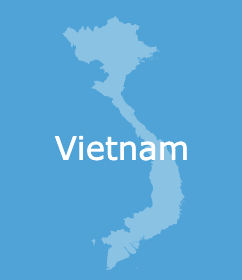 Recognizing the importance of small businesses in post-pandemic recovery, Vietnam has closely monitored its support for MSMEs. According to the General Statistics Office, the number of enterprises operating in the Vietnamese economy (excluding dissolved enterprises) was 760,000 in 2019 and 765,000 in 2020. Although heavily affected by the COVID-19 epidemic, there were 137,000 newly established enterprises in 2020, with a total registered capital of nearly VND2,000 trillion (US$86,676,591,849).
Recognizing the importance of small businesses in post-pandemic recovery, Vietnam has closely monitored its support for MSMEs. According to the General Statistics Office, the number of enterprises operating in the Vietnamese economy (excluding dissolved enterprises) was 760,000 in 2019 and 765,000 in 2020. Although heavily affected by the COVID-19 epidemic, there were 137,000 newly established enterprises in 2020, with a total registered capital of nearly VND2,000 trillion (US$86,676,591,849).
However, the COVID-19 pandemic has had a serious impact on MSMEs in Vietnam. According to a 2020 survey report, Impact of the COVID-19 Pandemic on Businesses in Vietnam, released by the Vietnam Chamber of Commerce and Industry (VCCI) in collaboration with the World Bank, showed that 87.2 per cent of the surveyed enterprises were suffering from “mostly” or “completely negative” impacts from the COVID-19 pandemic, while only 11 per cent saw “no effect at all” from the pandemic. Meanwhile, only two per cent experienced a “mostly positive” impact on their business during the pandemic. Micro- and small-scale enterprises and those with less than three years of operation were the most affected due to lack of business continuity.
Both domestic private enterprises (87.7 per cent) and foreign direct investment (FDI) enterprises reported negative experiences during the pandemic in 2020. The proportion of surveyed firms reporting mostly/completely negative impacts of the COVID-19 pandemic is as follows:
Domestic private sectors:
-
Garment industry (97 per cent)
-
Information and Communications sector (96 per cent)
-
Electrical Equipment Manufacturing sector (94 per cent)
Foreign-invested sectors:
-
Real Estate (100 per cent)
-
Information and Communications (97 per cent)
-
Agriculture/Fishery (95 per cent)
Due to the effects of the COVID-19 pandemic, up to 65 per cent of domestic private enterprises and 62 per cent of the foreign-invested enterprises experienced a decrease in revenue in 2020. The average decrease in revenue for domestic private firms was 36 per cent and 34 per cent for foreign-invested enterprises.
MSMEs had a higher average reduction in revenue than the large firms. The report also noted that the pandemic has made it difficult for MSMEs to approach customers as well as to employ workers. The pandemic has also disrupted supply chains and has incurred additional costs for COVID-19 prevention for MSMEs. Many businesses have been interrupted, and have stopped working due to the pandemic, and were even on the verge of bankruptcy due to a sudden decrease in demand. Some enterprises had to delay their investment progress or even cancel ongoing or future projects. Under the multiple shocks from the pandemic, the MSMEs in Vietnam have been forced to reduce costs by reducing staff hours, cutting wages, and letting staff go, as well as adjusting business models to rely more on digital platforms and digital solutions.
 Government support
Government support
In response to the crisis, the Vietnamese government has launched several support programs for enterprises and workers. It introduced measures to defer value-added tax (VAT) and corporate income tax (CIT) obligations, reduced CIT rates for small and micro firms, and deferred contributions to the pension fund and interest-free loans for salary payments. Specific supporting policies implemented are listed below:
By the National Assembly:
-
Resolution No.107/2020/QH14 dated on June 10th, 2020: extending agricultural land use tax exemption;
-
Resolution No.116/2020/QH dated on June 19th, 2020: reducing the CIT by 30 per cent in 2020;
-
Resolution No.979/2020/NQ-UBTVQH14, dated on July 27th, 2020: reducing 30 per cent of environmental protection tax on air fuel until the end of 2020;
-
Resolution No.135/2020/NQ14 dated on November 17th, 2020: supporting industries and sectors that have had the largest negative impact from the pandemic, including the aviation industry.
By the government and the prime minister:
-
Decree No. 41/2020/ND-CP dated on April 8th, 2020 and Resolution No. 84/NQ-CP dated on April 29th, 2020: support on financial loans and pensions, in which reducing the 2020 land use tax by 15 per cent and decreasing the interest rates for loans from the SME development fund by two per cent.
-
Resolution No.42/NQ-CP dated on April 9th, 2020: supporting workers and people who are in a difficult situation due to job and income loss;
-
Decree No.70/2020/NĐ-CP dated on June 28th, 2020: extending the deadline for tax deposit (excise duty) on the domestic automobiles manufacturing industry;
-
Decision No.22/2020/QĐ-TTg, dated on August 10th, 2020: reducing the 2020 land rent rate by 15 per cent for the largest affected enterprises, organizations, households and individuals.
According to the First Round of Covid-19 Business Pulse Survey conducted by the World Bank in June 2020, about 20 to 30 per cent of small, medium and large firms accessed government support. Among the different types of government support, the top three forms of support needed by enterprises are:
-
fiscal exemptions or reductions (73 per cent),
-
tax deferral (47 per cent) and
-
loans at subsidized rates (40 per cent).
The survey results also indicate that firms in the agriculture and other services sectors have a higher need for fiscal exemption or reductions, compared with firms in the manufacturing sector. The two important reasons for firms not receiving government support are ineligibility and a lack of information.
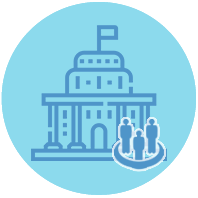 Priorities moving forward for MSMEs and the government
Priorities moving forward for MSMEs and the government
Under the negative impact of the COVID-19 pandemic, in order to survive and to sustainably develop, MSMEs in Vietnam need to prioritize the adjustment of their business models to accelerate the application of digital technology and to respond to local customers’ needs.
Furthermore, the MSMEs should reinforce their position in the global value chain. Overall, learning from good models and practices in coping with the COVID-19 pandemic should be a priority of MSMEs in the near future. By doing so, enterprises can look back on what has happened and might happen with their business and discuss ways to strengthen cooperation and linkages moving forward in the future.
To help the businesses sustain this transition towards the “new normal,” smart and effective support from the government will be needed in both the short and long term. Recognizing this, the Vietnamese government has prioritized developing and implementing policies that create more favourable conditions for businesses to survive and develop in the post-COVID-19 pandemic world.
Governmental policies should help industries become less dependent on external sources and address the long-standing outwork situation, while also adding value and strengthening Vietnam’s position in global supply chains, and creating more opportunities to benefit from the FTAs that require a high percentage of content of domestic and intra-regional origin.
In order to improve the accessibility of support policies for enterprises affected by COVID-19, the government needs to strengthen the dissemination of supporting policies by providing specific, detailed and comprehensive instructions on simple and easy-to-implement procedures. Moreover, the government needs to assess the problems and shortcomings in the implementation process to recommend timely adjustments and appropriate support for businesses in each specific industry, sector and period, particularly in the industries that are severely affected by the COVID-19 pandemic.
According to many forecasts, the COVID-19 pandemic will continue to cast a long shadow on the global economy and can only be completely eliminated after four to five years. Thus, studying and promoting long-term supporting policies for businesses should be a top priority for the Vietnamese government in the immediate future.
Philippines
 Micro, Small and Medium Enterprises (MSMEs) represent 99.5 per cent of registered enterprises in the Philippines and 46 per cent of the economy’s GDP. These enterprises employ more than half (63 per cent) of the country’s total workforce. Most MSMEs operate in limited domestic markets. MSMEs account for 25 per cent of the country’s total exports revenue, though an estimated 60 per cent of all exporters belong to the MSME category, through subcontracts or as suppliers to exporting companies.
Micro, Small and Medium Enterprises (MSMEs) represent 99.5 per cent of registered enterprises in the Philippines and 46 per cent of the economy’s GDP. These enterprises employ more than half (63 per cent) of the country’s total workforce. Most MSMEs operate in limited domestic markets. MSMEs account for 25 per cent of the country’s total exports revenue, though an estimated 60 per cent of all exporters belong to the MSME category, through subcontracts or as suppliers to exporting companies.
MSMEs in the Philippines are defined as follows:
|
Enterprise Type |
Asset Size in Philippine Pesos |
Number of Employees |
|
Micro |
Up to P3,000,000 |
1-9 |
|
Small |
P3,000,001 - P15,000,000 |
10-99 |
|
Medium |
P15,000,001-P100,000,000 |
100-199 |
The latest Philippine Statistics Authority records from 2019 report a total of 1,000,506 business enterprises operating throughout the economy. Micro enterprises comprise the majority of these enterprises at 89 per cent (891,044), followed by small enterprises at 10 per cent (99,936) and medium enterprises at 0.5 per cent (4,765). Almost two thirds of registered MSMEs are located in five main locations: the National Capital Region (20.2 per cent of enterprises), Calabarzon, Luzon (14.8 per cent), Central Luzon (11.6 per cent), Central Visayas (7 per cent) and Western Visayas (6.1 per cent).
The top five industry sectors that the majority of MSMEs (83 per cent) participate in are:
-
Wholesale and Retail Trade / Repair of Motor Vehicles and Motorcycles (462,492);
-
Accommodation and Food Service Activities (144,024);
-
Manufacturing (115,387);
-
Other Service Activities (65,918); and
-
Financial and Insurance Activities (46,100).
E-Commerce has been growing rapidly in the Philippines. However, entrepreneurs are hampered by slow internet - the internet in the Philippines is ranked the slowest and most expensive in Asia. Most e-commerce service providers, like Facebook, are foreign companies. Meanwhile, information technology business process outsourcing in the form of call centres and computer-related services such as software/game developers, animation, and IT engineering continue to grow.
Among the challenges faced by MSMEs, reported by the Asian Development Bank and other researchers, some of the highest ranked obstacles include:
-
corruption and high tariff rates in export markets
-
quality of telecom facilities
-
ports and airports and other trade infrastructure
-
lack of access to finance
-
unavailability of skilled labour
-
weak institutional support
-
difficulty in meeting international products and services standards
Filipino female entrepreneurs face additional challenges. As the Asia Pacific Foundation of Canada reports in the 2018 Survey of Entrepreneurs and MSMEs in the Philippines, 39 per cent of women surveyed reported that their company lacked access to any support services, while 36 per cent reported being uninterested in accessing support services. These proportions are more than twice those reported by men. Further, survey findings show that women entrepreneurs reported having less access to online business advisory services than male entrepreneurs (7 per cent compared to 19 per cent, respectively).
Covid-19 Situation for Filipino MSMEs
The Philippines continues to battle the worst COVID-19 crisis in Southeast Asia. Despite strict lock downs, the lack of testing, contact tracing, containment and low vaccination rates lead to case surges. The Asian Development Bank’s 2020 Navigating COVID-19 in Asia and the Pacific survey of 3,877 MSMEs from March to May 2020 reported that:
-
the Philippines had the highest rates of suspended operations one month after the virus outbreak,
-
the highest reported rates of delayed deliveries of products or services, and
-
the highest rates of temporarily laid off staff.
Almost 60 per cent of surveyed MSMEs in the Philippines reported zero income, while 28 per cent said revenues fell over 30 per cent.
Compared to the MSMEs surveyed from other economies, MSMEs in the Philippines noted the most cancellation of contracts (19.1 per cent) and delayed delivery of products and services (35 per cent) during the lockdown. Between March and April 2020, 36.7 per cent of MSMEs in the Philippines said they had no cash and savings, while 42.1 per cent said cash would run out in a month. Even before the pandemic, access to finance was the greatest barrier for MSMEs. At the height of the lockdowns in March and April, 17 per cent of those surveyed applied for bank loans, while only 4.4 per cent of MSMEs were able to access bank credit, relying mostly on savings or borrowing from friends and relatives. Compared to other APEC economies who were able to translate an increased global demand in electronics to local manufacturing, the Philippines’ reliance on tourism and remittances from overseas workers dimmed economic forecasts to the lowest growth in the region.
In October 2020, in a United Nations Development Programme (UNDP) survey on the impact of COVID-19 on MSMEs, 60 per cent of respondents reported that they had not received any assistance from any stakeholder (government, private sector, NGOs, and others) yet. The most urgent needs reported were access to credit facilities, tax breaks, and deferred loan payments. Report recommendations included improving the safety and efficiency of public transportation for the safe mobility of people and products, and the need for improved supply chain management through increased local procurement.
Key policies and support
Even before the pandemic, the government has introduced a number of policies to support Philippine MSMEs.
The Department of Information and Communications Technology has promoted a program called “digitaljobsPH” for online freelancers or internet-based home businesses, including MSMEs, to encourage the use of e-commerce. During 2018–2019, more than 2,000 people graduated from the program, and 700 MSMEs (online businesses) were created backed by this program.
The 2002 Barangay Micro Business Enterprise (BMBE) designation continues to grow despite low awareness among MSMEs and implementing local government units. The designation exempts micro enterprises from paying income and value added taxes, and other percentage taxes. Financial institutions are given incentives to provide loans to BMBE-registered business enterprises and are required to provide a special credit window for BMBEs. BMBEs also access free programming through the Department of Trade and Industry (DTI) Negosyo/Business Centres, the University of the Philippines Institute for Small Scale Industries (UP-ISSI), and the Department of Science and Technology (DOST). Over 12,000 BMBEs were registered in 2017, however the World Bank estimates that 40 per cent of the Philippines’ economy is underground or a shadow economy.
In addition to existing support policies, the government has introduced more measures to assist MSMEs during the COVID-19 pandemic.
-
In April 2020, the Department of Trade and Industry (DTI) announced a minimum 30-day grace period for residential and commercial rents from the lifting of various lockdown stages. Tenants have the option to pay the cumulative amount of residential and commercial rents that fall due within the lockdown stages in instalments equally amortized in six months following the end of the 30-day minimum grace period. All unpaid rents during the lockdowns shall not incur interests, penalties, fees, and other charges. No eviction for failure to pay the residential or commercial rent may be enforced during the quarantine period.
-
The Department of Trade and Industry (DTI) has also provided support to help MSMEs transition to online sales. In 2020, the DTI’s Go Lokal program helped 131 MSMEs and 1,000 products transition to local online retail sites.
-
DTI’s COVID-19 Assistance to Restart Enterprises (CARES) microfinancing program offers loans at 0 per cent interest rate that are payable in 18-24 months. To date, over 20,000 applications have been approved.
-
The Department of Finance’s PhilGuarantee credit guarantee program has expanded its support for MSMEs until September 2021. Almost 3,000 loan guarantees totalling CAD$4.5M were approved in 2020.
In March 2021, President Duterte authorized a 10 per cent decrease in corporate tax. However, the Philippines maintains the highest corporate tax rates in Southeast Asia at 30 per cent.
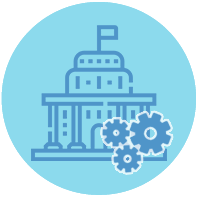 Priorities moving forward for MSMEs in the Philippines
Priorities moving forward for MSMEs in the Philippines
Prior to the pandemic, MSMEs in the Philippines had already reported financial challenges such as mounting debt. Therefore, government grants programs would be more effective than loans.
With almost half the economy is attributed to unregistered business, the aforementioned Barangay Micro Business Enterprise (BMBE) program is a good example of an initiative which benefits MSMEs with tax- free status while providing them access to valuable training, credit and shared services. The government can improve participation rates in such training and funding support programs with improved communications campaigns targeted to the MSME audience and through popular and free social media channels such as Facebook and Instagram. Additional support through targeted logistics and online platforms partnerships and a gamification of online selling strategies would help build a steady stream of support to highlight selected MSMEs and market trends.
Related to MSMEs is the topic of freelancing and the gig economy. The Philippines is also ranked as one of the world’s top freelancer economies, with 35 per cent revenue growth in the gig-economy. The Philippine government must implement legislation that can help protect freelancers from exploitation, while also cultivating a more equitable environment and long-term client base to avoid the pitfalls of gig economies.
Most importantly, with women leading the majority of MSMEs, more research and programming need to be developed to understand and address women’s lack of access to basic infrastructure such as roads, financing, equipment and training even though they represent the lion’s share of livelihood and household responsibilities.
Peru
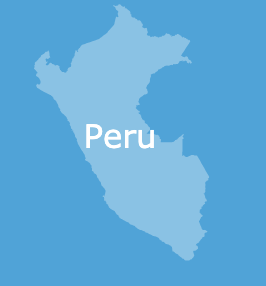 Context of MSMEs in Peru
Context of MSMEs in Peru
MSMEs are the main type of business in Peru, representing more than 99% of the total of enterprises across the economy. In Peru, the definition of MSMEs is defined by the law Nº 30056, which was created to facilitate investment, and promote productive development and business growth of MSMEs. This law forms the basis for categorizing MSMEs according to the total sales for each type of enterprise:
-
Micro enterprise: Annual sales up to a maximum amount of 150 UIT1s – S/. 660,000 (US$183,000);
-
Small enterprise: Over 150 UITs and up to a maximum amount of 1,700 UITs – S/. 7,480,000 (US$2.1M approx.);
-
Medium enterprise: 1,700 UITs and up to a maximum amount of 2,300 UITs – S/. 10,120,000 (US$2.8M approx.); and
-
Large enterprise: Annual sales greater than 2,300 UITs.
Most of the businesses in Peru are micro enterprises (96.2 per cent), which contribute to approximately 40 per cent of GDP and more than 60 per cent of employment. However, only 6 per cent of productivity can be attributed to MSMEs even though they make up the lion’s share of the economy. Unfortunately, MSMEs have less impact on economic and social growth due to the dominance of informal enterprises in every sector.
The global pandemic has negatively impacted all businesses in Peru, especially MSMEs. Due to their size and lack of resources, many MSMEs did not have the tools to face the impact of COVID-19. According to a 2020 report by the International Labor Organization, in Peru, both unemployment and informal employment rates have increased. For example, the economically active population (EAP), which includes individuals who are working or who are actively seeking work, decreased by more than 6 million people. Similarly, the income levels of Peruvian families have decreased considerably.
In August 2020, almost 25 per cent of businesses were no longer operating. Of those that survived;
-
77 per cent has decreased its demand,
-
59 per cent indicated the high costs to implement security protocols,
-
52.8 per cent had delays in bill collection,
-
50.4 per cent have stopped their production, and
-
45 per cent lost their working capital.
Most businesses also faced other problems such as lack of liquidity to purchase raw materials, pay suppliers and limited access financial resources.
According to the Institute of Economics and Business Development of Chamber of Commerce of Lima, Peru’s GDP is estimated to contract by 3.7 per cent due to the COVID-19 pandemic. Pandemic-related restrictions have caused a fall in demand and business interruptions which have severely impacted MSMEs.
Key Government Policies Supporting MSMEs:
In 2020, the government helped MSMEs during the pandemic by offering them different kinds of support instruments focused on: debt finance, tax, employment support, and demand. There were more than 10 support instruments developed by the public sector in an unprecedented collective effort (Figure 1).
Figure 1
Number of instruments by type of support
Source: Map of SME-Support Measures in Response to COVID-19, World Bank
Table 1
Description of instruments
Adapted from: Map of SME-Support Measures in Response to COVID-19, World Bank
|
Type of Support |
Instrument |
Description |
|
Debt finance |
Capital buffer safeguards requirements on banks and central banks’ actions to induce commercial banks to increase lending to MSMEs, such as lowering capital requirements.
Easing capital buffers, the minimum required capital that financial institutions must hold, and other capital requirements to induce lending to MSMEs. |
The Central Reserve Bank of Peru (BCRP) held an auction of repurchase agreements (repos) of currencies for S/ 400 million (USD $113 million) within one year, at an interest rate of 3.1 per cent. It injected liquidity into the financial market for S/500 million (USD $141 million) within 6 months, through an auction of Repo of currencies at an interest rate of 2.80 per cent. It also reduced the benchmark interest rate by 100 basis points from 2.25 per cent to 1.25 per cent |
|
|
Credit guarantees – new schemes, more generous guarantee levels Introduction of new credit guarantee schemes (CGS) at more generous guarantee levels. |
Ensure companies’ payment chains by granting credit guarantees. |
|
|
Delayed repayments. Deferral of payments, restructuring and rescheduling. |
Banks to postpone debt payments of their clients. |
|
|
New lending -under concessional terms. |
Measures have been taken to make it more flexible for banks to reschedule payments held by individuals and businesses more than 12 billion Soles (USD $3.378 million). SUNAT has also taken action in its sector, among others. |
|
Tax |
Corporate tax – rate reductions, credits, waivers, and/or deferrals. |
Grace period for the payment of income tax for MSMEs and individuals until early June 2020 |
|
|
Payroll/social security/VAT taxes/land taxes - rate reductions, credits, waivers, and/or deferrals Rate reduction, credits, waivers and deferrals for payroll, social security, land and value-added (VAT) taxes. |
Income tax and financial transaction tax payment extension for MSMEs. |
|
Employment Support |
Provide wage subsidies (can be broad, or targeted – e.g. apprentices) as an alternative to direct payments to individuals. |
Beginning in mid-April 2020, the government will subsidize the salaries of those whose jobs are completely suspended due to the pandemic, with payments of USD $225 per month. |
|
|
Support for informal or self-employed workers. |
The Peruvian Government will give the equivalent of 380 Soles (USD $105) to each family living in the informal sector and self-employed workers living on the "day-to-day" will be included as beneficiaries |
|
Demand |
Other public expenditure programs |
Support to enterprises, including additional spending of approximately S/.2.2 billion (US$ 620 million). |
To address the challenges faced by MSMEs, the Ministry of Economy and Finance also created initiatives such as the Reactiva Peru program and the Business Support Fund for MSMEs.
In addition to these key public policies, many MSMEs in Peru have had to employ several measures or strategies for surviving. According to a paper titled “COVID-19: An Assessment of MSMEs Survival Strategies in Nigeria and Peru” (Chambe and Uchenna 2020), many MSMEs were focused on reduced the wage bill by laying-off some employees, enhanced debt recovery strategy, improved negotiation with creditors, took advantage of government and other entities MSMEs support packages, and employed digital channels.
Priorities moving forward for Peruvian MSMEs
The negative impact of the second wave of COVID-19, and the possible third wave, bring further challenges for the MSMEs and economy as a whole. Although the government’s priority is to reactivate and recover the economic growth in Peru, an individual approach is no longer an option. For that reason, it is vital that all the actors in the ecosystem do their part, to support MSMEs and entrepreneurs.
According to the International Monetary Fund’s (IMF) Policy Tracker, access to funds, credits, and grants (eg. FAE MyPES, FAE Turismo, Reactiva Peru, Programa de Garantías Covid-19, Todos Conectados, among others) are relevant and crucial for MSMEs in Peru. However, the private sector and civil society organizations can contribute in providing the technical support, training and upskilling of the enterprises, to ensure they will have the right tools that promote their improvement and growth, therefore, create a positive impact for their stakeholders.
Indonesia
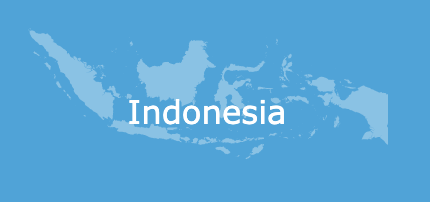 There are more than 64 million MSMEs in Indonesia, making these businesses the backbone of the economy. MSMEs account for 99 per cent of existing businesses and contribute to more than 60 per cent to the national Gross Domestic Product (GDP). Many of these MSMEs are small, home-based businesses in the agricultural or retail sectors. Despite the large contribution of Indonesian MSMEs, according to Bank Indonesia, the economy’s central bank, MSMEs are facing three key challenges: (1) access to Finance (2) access to Markets and (3) access to Technology and Infrastructure.
There are more than 64 million MSMEs in Indonesia, making these businesses the backbone of the economy. MSMEs account for 99 per cent of existing businesses and contribute to more than 60 per cent to the national Gross Domestic Product (GDP). Many of these MSMEs are small, home-based businesses in the agricultural or retail sectors. Despite the large contribution of Indonesian MSMEs, according to Bank Indonesia, the economy’s central bank, MSMEs are facing three key challenges: (1) access to Finance (2) access to Markets and (3) access to Technology and Infrastructure.
MSME support policies
In recent years, the Indonesian government pushed out a large number of programs and directives to speed up the digitization process of its MSMEs in order to reach the goal of digitizing 30 million MSMEs. The government has collaborated with the private sector, specifically Indonesian tech startups, and has deployed programs such as:
-
#MelajubersamaGojek: an initiative by GoJek and supported by the Ministry of Cooperatives and SME that helps MSMEs implement digitization strategies at every step of their daily business operations, starting from marketing, order (order processing), payment, delivery to administration.
-
UMKM go Digital: an initiative by the Ministry of Maritime and Investment featuring a series of capacity-building programs that includes workshops and training to equip MSMEs with branding, marketing and business skills and knowledge to compete in today’s digital market.
Innovation Factory, as a tech and innovation hub based in three major cities (Jakarta, Bandung and Yogyakarta), attests to the fact that one of the most effective ways to help our MSMEs sector to grow and thrive is by investing in a strong technology startup ecosystem. In the case of Indonesia, tech startups have proven time and again to be highly effective at leveraging technology to provide support for often hard to reach MSMEs through new innovation in critical areas such as access to capital, access to customers, as well as cost saving/operational optimization.
Key priorities for MSMEs in Indonesia
Access to Alternative Capital
MSMEs require capital to start and sustain their operations. However, most of them are too small to have any access to banking support. The majority of Indonesians still do not have access to proper financial services such as bank accounts, loans, etc.
Due to Indonesia’s unique geography as an archipelago, geographical fragmentation and lack of data sharing are common issues. As a result, traditional financial institutions find it difficult to support the needs of the majority of MSMEs, especially micro and small enterprises.
However, there is a strong growth in the number of fintech startups that have received strong financial backing from venture capitals (both local and international) to build alternative funding sources to support the untapped MSME market, focusing on vertical-specific sectors such as agriculture and retail.
Below are examples of fintech startups in the agricultural sector, the biggest sector for MSMEs in Indonesia.
-
GrowPal - provides a crowdfunding platform for aquaculture farmers in Indonesia (mainly fish and shrimp farming) to access capital from retail investors to expand their operations. GrowPal also provides farmers with access to modern technology that helps them be more capital efficient, improve farm monitoring so they can reduce their cost of operations (feed optimization) and increase profit (yield optimization).
-
TaniHub - provides endto-nd services along the value chain from farm to table, benefiting both farmers as well as business and retail consumers. It provides farmers access to capital to buy their raw materials such as seeds, fertilizers and machineries. On top of that, it has also built strong supply chains to help farmers distribute their crops directly to customers. As of early 2020, the company has successfully partnered with more than 30,000 smallholder farmers and operates five distribution centers across the country. The company also serves more than 5,000 business customers and 115,000 retail customers through its platform. Since 2016, the company has raised more than USD 26 million in funding from well-established funds in the region to support its growth to reach more than 100,000 smallholder farmers in Indonesia.
Access to Customers
One of the most difficult challenges for businesses is to get access to customers in a cost effective manner. These challenges are more profound in micro and small businesses due to their lack of capital and knowledge to access tools such as digital presence, online marketing, growth hacking, etc. Most of them end up not being able to reach out to the customers efficiently, not achieving growth (staying stagnant) or closing shop altogether.
The Innovation Factory has observed that there is strong growth in highly successful marketplace startups in the country that provides a thriving platform and ecosystem for a large number of MSMEs to grow. They provide standardizations that are user friendly, spend a large amount of their own capital to bring Indonesian consumers online, and develop a robust supply chain network to support the flow of goods and services across the country.
Below are several new, yet extremely essential marketplaces that serve the needs of 275 million Indonesians spread across 17,508 islands in the archipelago:
-
Tokopedia (E-commerce Marketplace)
-
Founded in 2009 (12 years old company)
-
Total funding raised so far: $2.8B
-
Employs 4,700 digital workers (as of 2019 numbers)
-
In 2019, Tokopedia's gross merchandise value (GMV) reached IDR 73 trillion (USD 5,1 billion) in 2018 and the value is expected to increase to IDR 222 trillion (USD 15,6 billion) in 2019, equivalent to 1.5 per cent of the Indonesian economy
-
In 2019, according to a report by iPrice Group, Tokopedia was the most visited e-commerce website on a desktop in Indonesia between July and September with a total of 65,953,400 average monthly visits, securing 25% of the total market share.
-
As of November 2019, Tokopedia had over 7,000,000 merchants with more than 200 million curated products ranging from food and beverages to beauty and fashion products. (source)
-
Because of the support provided by marketplaces such as Tokopedia,MSMEs now have a national presence and are able to serve customers beyond their geographies through their online presence, payment processing and efficient delivery networks.
-
Gojek (On-demand Marketplace)
-
Founded in 2010 (11 years ago)
-
Total funding raised so far: $5B
-
Employs 3,000 digital workers (as of 2019 )
-
Gojek contributed IDR 8.2 trillion annually into the Indonesian economy through the income of driver partners. An additional IDR138.6 billion per month is contributed into the national economy since SME merchant partners joined Go-Food, and IDR 1.7 trillion into Indonesian economy through the income of SME merchant partners. [Please help to convert to USD for reference]
-
Gojek has brought many offline mom and pop shops online, which has helped them weather the the COVID pandemic by maintaining access to customers even when offline retail businesses come to a complete halt during the national lockdown.
Access to Technology
Technology is one of the biggest leverages any organization can use to optimize its operations to be more efficient, reduce cost and scale better. However, because MSMEs tend to be slower in adopting a new product or innovation, they are often classified as "laggards” within the technology adoption cycle. They are harder to reach, more difficult to train and more reluctant to try new things.
It has been a daunting challenge for many government agencies in charge of tackling digitalization. However, we are seeing greater successes in this area, led by highly talented and well capitalized startups looking for opportunities to serve these largely untapped MSMEs where most of the business activities are still being done on pen and paper.
Below are some successful startups that operate in this area:
-
Moka is an Indonesian fintech startup that focuses on building mobile point-of-sale (mPOS) for small and medium businesses.
-
Founded in 2014 (7 years old startup)
-
Recently acquired by Gojek for $130M (2020)
-
They have supported more than 40 thousand merchants and recorded more than 600 million transactions
-
Its services include sales reports, inventory management, table management, loyalty programs, and more.
-
The platform helps improve a company’s bookkeeping process by tracking all of its transactions including credit, expenses, and sales, and helps merchants with cash flow visibility through business reports.
-
Founded in 2019 (2 years old startup)
-
Total funding to date: $20M
-
BukuWarung claims it has served over 3.5 million registered merchants across 750 cities and towns in Indonesia, most of them from tier 2 and tier 3 cities. The company also claims it has recorded over USD15 billion worth of transactions across its platform.
-
The company has recorded over USD15 billion worth of transactions across its platform since its founding.
In summary, organizations on-the-ground, such as the Innovation Factory strongly believe that investing in growing a thriving tech startup ecosystem has one of the best returns on investment by supporting the growth of MSMEs in any economy.
Women Entrepreneurs in a Post-Pandemic World
 Sini Maria Heikkila, senior advocacy advisor at the Cherie Blair Foundation for Women
Sini Maria Heikkila, senior advocacy advisor at the Cherie Blair Foundation for Women
The number of women entrepreneurs has increased steadily within the Asia Pacific with more than 60 million women across the region operating businesses. The majority of these companies are micro, small and medium sized enterprises (MSMEs). As the region seeks economic recovery during and after the COVID-19 pandemic, it is more crucial than ever to invest in the enormous untapped potential of women entrepreneurs to drive economic growth, create jobs, and most importantly, ensure that the economic rights of half of the region’s population are fully respected.
Since the beginning of the Cherie Blair Foundation for Women’s (CBFW) mentoring programme in the APEC region in 2012, the Foundation has worked with over 500 women entrepreneurs in the region by providing training, mentoring and networking opportunities.
Over the last year, COVID-19 has had a devastating and disproportionate impact on women entrepreneurs both globally and within the region. CBFW’s recent research, drawing on the responses from 125 women across 32 countries, shows the stark impacts of COVID-19 on women entrepreneurs. Most (83.80 per cent) women entrepreneurs surveyed reported that the pandemic has had a negative impact on their businesses. Nearly four in 10 women (38.5 per cent) responded that their business may have to close as a result. Over a third of these women (34.4 per cent) reported that they would struggle to afford necessities like food if their business closed down.
Furthermore, women entrepreneurs struggle to obtain funding from traditional lenders such as banks and investors. Many economic stimulus-packages created to address the negative impact of COVID-19 have not reached women-owned businesses. The unpaid care burden has increased during the pandemic. For instance, 75 per cent of entrepreneurs interviewed by UN Women in the Asia Pacific stated that their caregiving responsibilities increased due to COVID-19. Feminized sectors such as tourism, entertainment, retail, and hospitality have been disproportionately hit by the pandemic.
The UN Women Asia-Pacific study on the impacts of the COVID-19 sheds more light on the situation of women entrepreneurs in the region. Out of the entrepreneurs surveyed, 86 per cent say they were either negatively or very negatively affected by COVID-19 and 34 per cent reported that they soon might have to shut down their operations entirely.
Though the pandemic has undoubtedly been extremely challenging for many women entrepreneurs, it is critical to remember that even before the pandemic, the playing field for women entrepreneurs needed levelling. There were legal, cultural and financial barriers preventing and discouraging women from starting and driving businesses.
The World Bank’s Women, Business and the Law 2019 report showed that a typical economy gave women only three-quarters the legal rights of men in areas related to women’s economic participation, including entrepreneurship. Women entrepreneurs were also less likely to have access to human, financial and social capital. Globally, women owned 40 per cent fewer businesses than men. According to the World Economic Forum Gender Gap Report in 2019, it would have taken a massive 257 years before gender parity in economic participation and opportunity was to be achieved. It then comes as no surprise that the gender gap in economic equality has grown even more since the pandemic.
Women entrepreneurs are key to promoting inclusive and equal economic recovery across the region. Women’s economic empowerment can help to create a pathway out of this crisis – through job creation, economic growth and promoting gender equality. McKinsey estimates that taking action now to ensure gender equality in macroeconomic policies could add a whopping US$13T to global GDP in 2030 compared with the gender-regressive scenarios.
There is also clear evidence showing that nations are poorest when the limits on women’s economic engagement are strongest. Given the critical role women entrepreneurs play in poverty reduction, job creation and the interrelation between women entrepreneurship and wider women’s empowerment, the impact of the economic crisis on women entrepreneurs can have long-lasting negative outcomes for wider gender equality and achievement of global development goals.
Investing in women entrepreneurs and promoting women’s economic empowerment is also a moral and human rights issue. It is essential that economic justice and gender equality are fully embedded in the post-pandemic economic recovery.
Now is time for all stakeholders to take coordinated and concrete action to support women entrepreneurs and women’s wider economic empowerment.
There is an urgent need to put women front and centre of economic policy and ensure gender-responsive COVID-19 recovery by working with women entrepreneurs to design support packages that will reach them and enable their businesses to survive the pandemic. Furthermore, it is important to work on the long-term challenge of lack of access to finance for women entrepreneurs and ensure that, for instance, public procurement processes are equally accessible for women entrepreneurs.
The recognition of the disproportionate care burden is fundamental to any program to build back better. Thus, collection of national-level data and evidence on unpaid care and domestic work is important to create gender-sensitive policies in consultation with local women’s rights organizations. Furthermore, it is important that global macroeconomic policy discussion address the gender inequalities in unpaid care responsibilities.
It is also essential that the voices of women entrepreneurs and their organisations are heard by those who hold power both in Asia Pacific and globally, and that women entrepreneurs are involved in any other policy negotiations seeking to “build back better.”
The Cherie Blair Foundation for Women has a strong track record of working with women entrepreneurs in the Asia Pacific region through mentoring, the award-winning Her Venture app and the Road to Growth program. The 100,000 Women Campaign has ambitions to reach many more thousands of women in the region by the end of 2022.